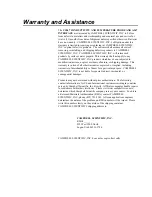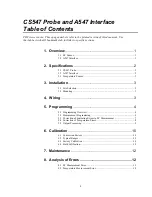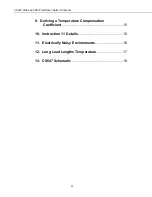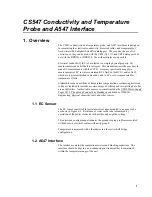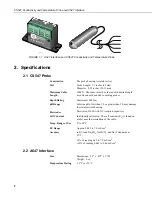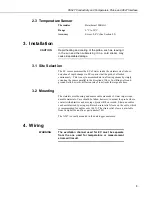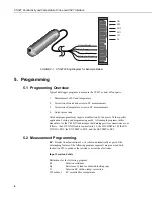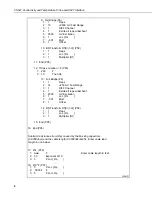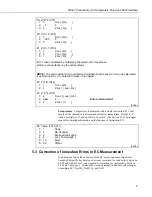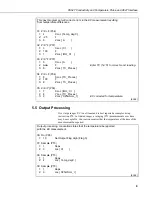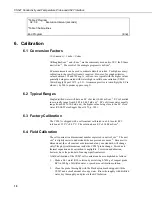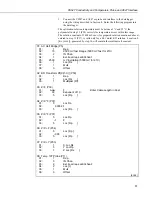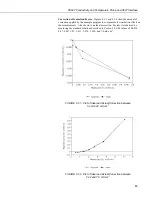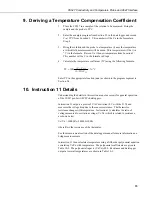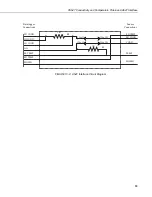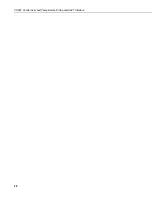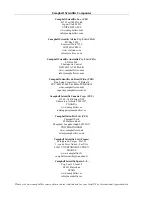
CS547 Conductivity and Temperature Probe and A547 Interface
8
The following program segment automatically chooses which correction to
apply to the measurement.
;
;The following program set corrects for errors of ionization in the EC
;measurement.
;
25: IF (X<=>F) (P89)
1:
3
X Loc [ Ct ]
2:
4
<
3:
.474
F
4:
30
Then Do
26: Z=X*F (P37)
1:
3
X Loc [ Ct ]
2:
.95031
F
3:
3
Z Loc [ Ct ]
27: Z=X+F (P34)
1:
3
X Loc [ Ct ]
2:
-.00378
F
3:
3
Z Loc [ Ct ]
28: Else (P94)
29: Polynomial (P55)
1:
1
Reps
2:
3
X Loc [ Ct ]
3:
3
F(X) Loc [ Ct ]
4:
-.02889
C0
5:
.98614
C1
6:
.02846
C2
7:
.000000 C3
8:
.000000 C4
9:
.000000 C5
30: End (P95)
(cont.)
5.4 Correction of Temperature Errors
The effect of temperature on the sample solution can cause large errors in the
EC measurement. A simple method of correcting for this effect is to assume a
linear relationship between temperature and EC. This method generally
produces values to within 2% to 3% of a measurement made at 25°C.
The best corrections are made when the temperature coefficient is determined
at a temperature near field conditions. See Section 9 for details on how to
determine the temperature coefficient. If determining the temperature
coefficient is not possible, use a value of 2%/
°
C as a rough estimate.
The following program segment implements a previously determined
temperature coefficient (TC) and calculates the corrected conductivity.


